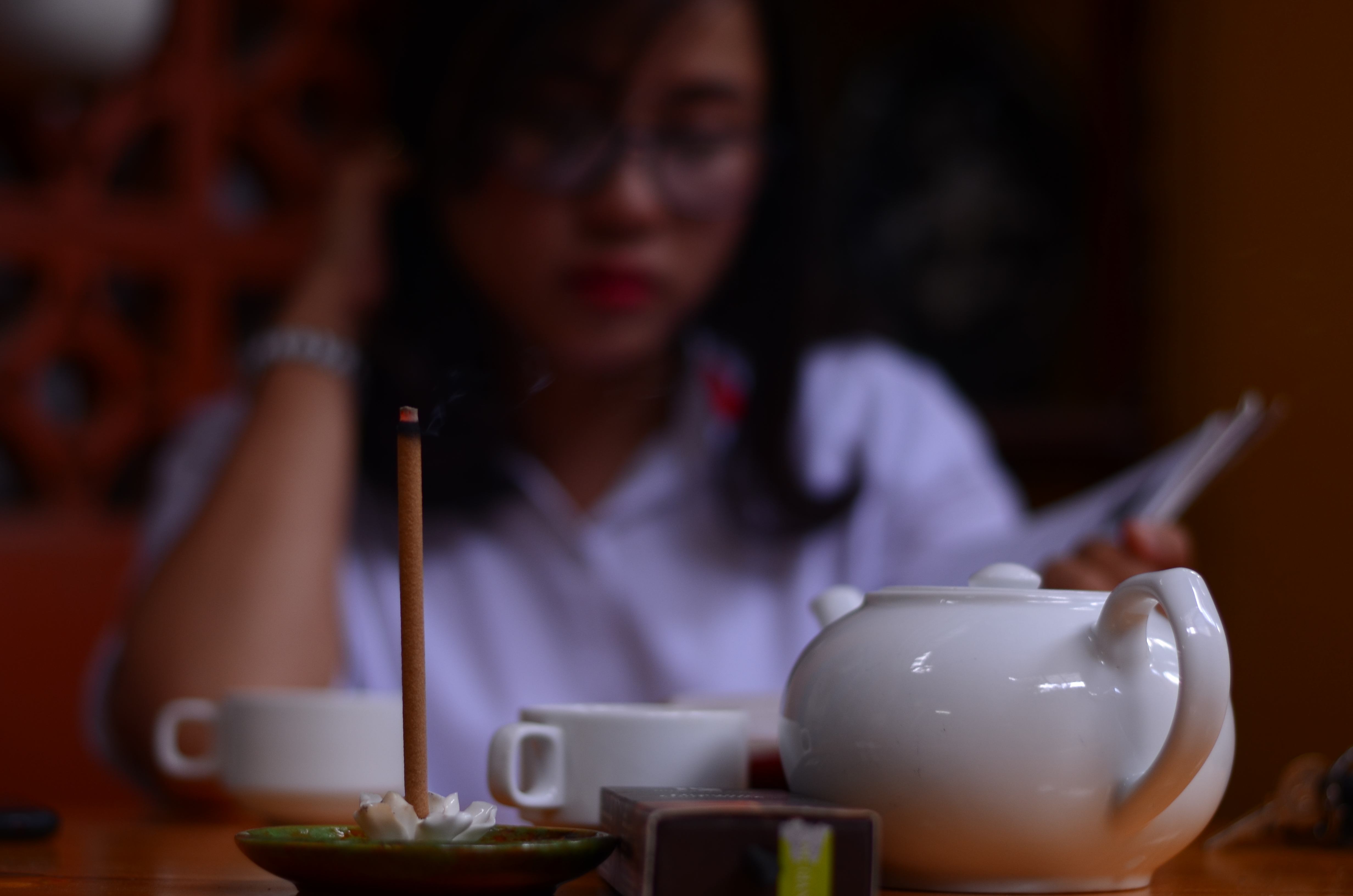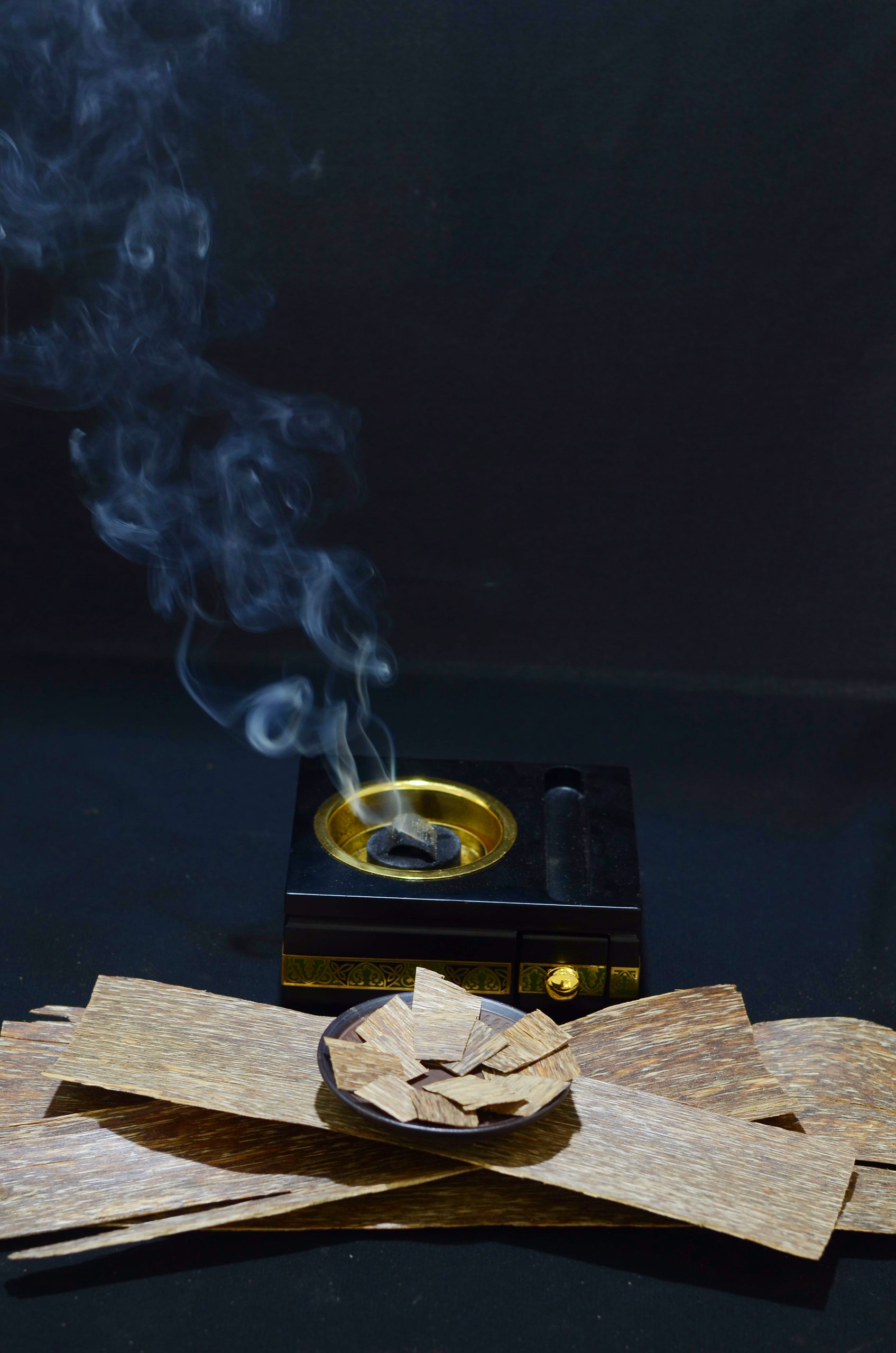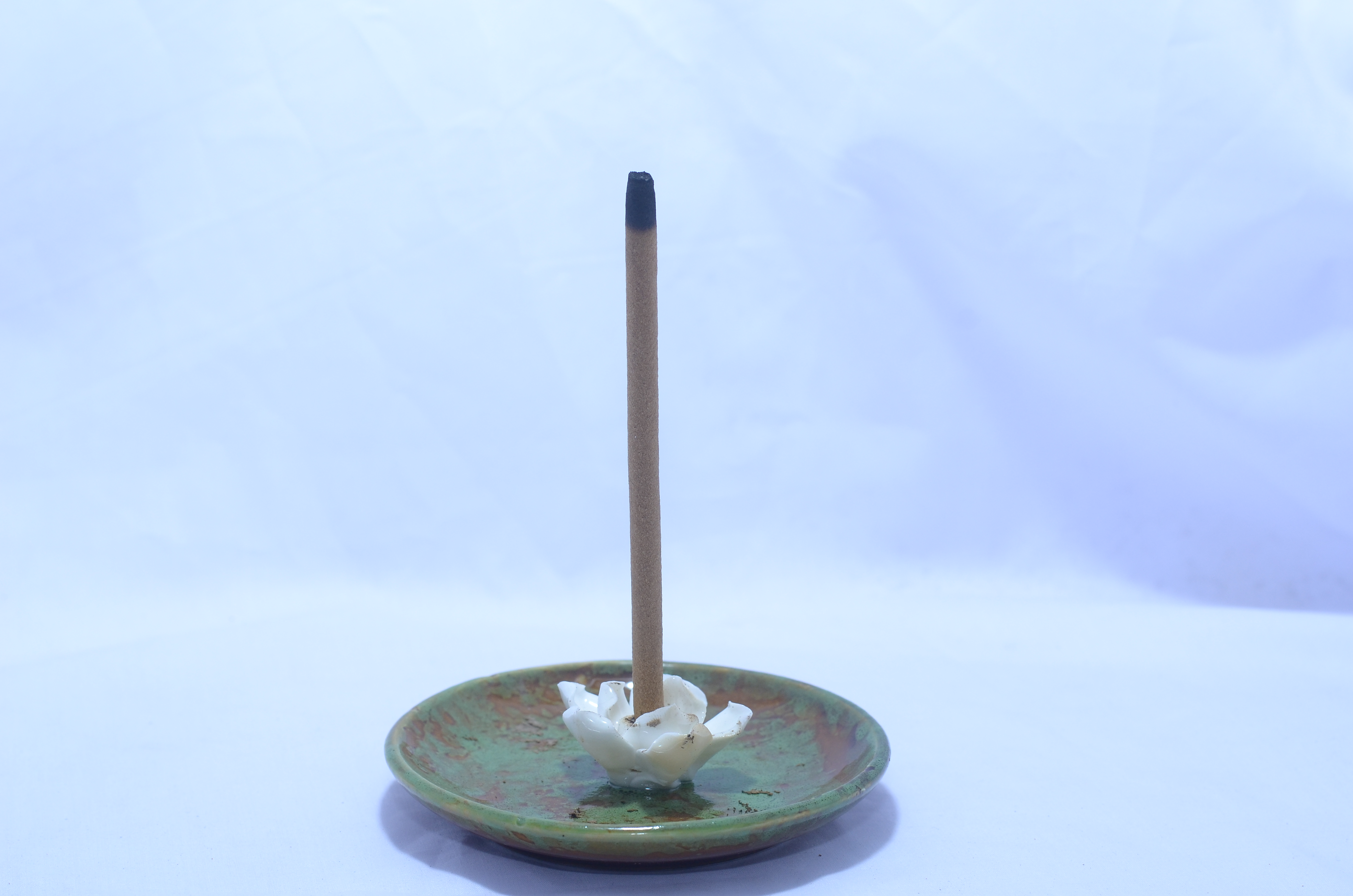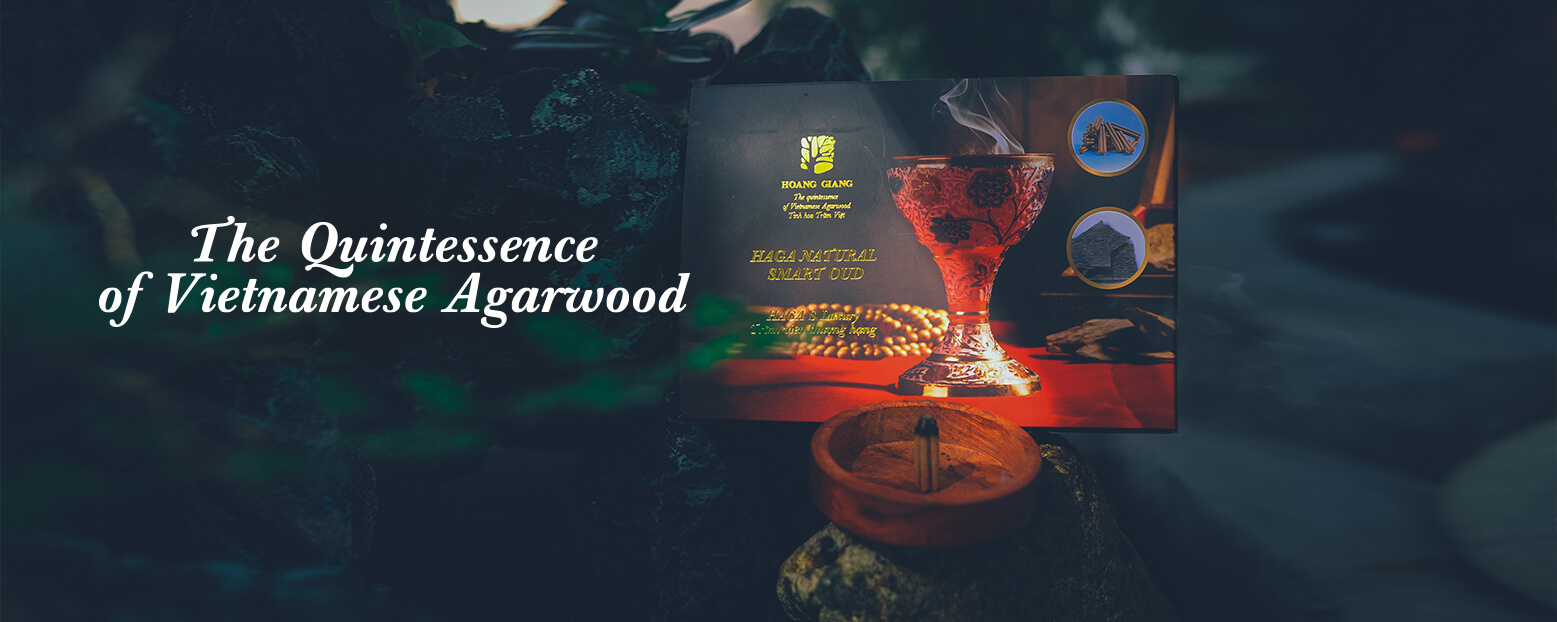Agarwood incense steaming culture through time and space
Agarwood for steaming is formed in many types. However, the most popular type is Agarwood incense. Agarwood incense is made from pure Agarwood powder, mixed with litsea powder and water in order to form a sticky mixture. It then compressed into the shapes such as stick, cone, bud or bakhoor.

Agarwood incense steaming culture through time
When steaming incense, users only need to burn the tip of the incense products then put on accessories (often be incense plates, holders or waterfall backflow burners) which is made of wood, copper, porcelain, terracotta,… After smoldering, Agarwood incense billow out its specific clouds of thin white smoke. The smoke from Agarwood emanates through the air before going straight up high to bring the warm, woody, sweet aroma so that evil spirit will be dispeled. This aroma also own the ability to remove impurities, moldy air in houses, offices, kitchens,… give the comfort, warmth and relaxation back to living spaces
Agarwood incense steaming lasts from 2 to 4 hours, depending on the space, time as well as the need of users. Moreover, the warmth of Agarwood may suitable for each different person at any time. However, you should steam the incense 2 hours before bedtime, so that incense can maximize its benefits of clean the air, help to relax the mind, relief and easy to fall asleep.

Agarwood incense steaming culture through space
In Japanese
The first formal record of Agarwood burning was found in a classical Japanese history – a book called Nihon Shoki. During Asuka period on 6th century with the introduction of Buddhism, incense has been used in many ceremonies and rituals for many purposes.
In Japanese incense culture, there are two main type of incense products: direct-burning Agarwood pieces or incense products formed in stick or cone shapes.
In Korea
In Goryeo Dynasty (918-1392), a book namely Goryeo Dokyung, written by Seo Gung of the Song Dynasty revealed that Korean enjoyed the incense culture since that time.
The culture spreading to Korea was recorded in Samguk Yusa, a book about the history and legends of ancient Korea’s Three Kingdoms, during during the reign of King Nulji of Shilla (57 BC to 935 AD).
The Korea incense burning was raised to a high level in spiritual culture with the apperance of Sanyechulhyang, a delicate incense burner made under the Goryeo Dynasty. Unfortunately, this position was not longer be admitted due to the invasion of Janpanese in the 16th century.

In China
The practise of incense burning ceremonies is the process of focusing one’s mind by absorbing the possitive energy from the beautiful scents. This is the way provide one the chance to observes thoroughly the whole body and mind.
Incense burning is considered a high cultural activity. High quility incense was imported from abroad since the Tang Dynasty (618-907). This culture is called Sabanhansa which is includes drawing, tea, flower arrangement and incense.
The literary in China also treasured incense burning culture as one of four means for mind cultivation and self improvement.
In India
In Vedas, the oldest record, making incense was mentioned in form of a uniform method, specifically in the Atharva-veda and the Rigveda. It is written that incense was used for masking odours and creating a pleasurable aroma.
For thousands of years, Indian has been developing the incense burning culture and then expand the cultural influence to others countries such as Japan, China, Asia countries.
There are two major way for burning incense in India which is incense stick or agarbathi (a thin wooden stick covered in a substance that is burned to produce a pleasant smell, especially as part of a religious ceremony).
Benefits of Agarwood incense steaming
In Fengshui
Originating in Eastern cultures, Fengshui is a Chinese belief which is seek and create harmony of energy surrounding people’s house or workplace, then promote health, peace, properity or lead to greater longevity.
During centuries, Agarwood was recorded to has the auromatic scent attracting good fortune, auspicious omen and banish evil spirits or bad luck. Thus, people steaming agawood incense in their house hoping that this Mother Earth’s treasure will bring them all the mental and physical prosperties such as strong-mindedness or success in every aspects of life.

In spiritual world
In the religious ceremonies and acts of worship, incense helps to create a sacred, respectful atmosphere, build a connection space between spiritual and earth world, between visible people and invisible souls. The Agarwood incense smoke creates a sense of calm and peace, especially useful in meditation.
Agarwood aroma pushes back the evil spirits, removes unclean odors, dispels bad lucks. Besides, there are some other wonderfull benefits of Agarwood that can not be forgetten like purifying living spaces, removing unpleasant smells, retain the mild aroma in the atmosphere.
Furthermore, the delicate scent has a good effect in the removal of mosquitoes, insects and create a sense of lovely smell, especially in the workplace, bedroom, meditation room, yoga studio,…
In healing
- Sedative: Agarwood has a mild aroma, especially when being burned, this wood will give a kind of fragrance that can not mistaken with another kind of fragrance; help to relax, dispel tiredness, sorrow, reduce stress, tired, promote sleep.
- Pain relief: Agarwood works well with headache, chest pain, abdominal pain.
- Digestive: Agarwood helps reduce sputum, diarrhea, anti-vomiting.
- Good for heart: according to oriental medicine, Agarwood helps to support a strong heart.
LEAVE A REPLY below if you have any interest in making Hoang Giang Ltd. your best supplier. We always offer FREE SAMPLE for our customers.
See our products here
HOANG GIANG AGARWOOD CO., LTD.
Main office & Factory:
Nguyen Minh Chau Street, Hiep Cuong Hamlet, Lagi Town, Binh Thuan Province, Vietnam.
Trade office:
L40, Street No.11, Him Lam residential area, Tan Hung Ward, District 7, Ho Chi Minh City, Vietnam
Hotline: +84 973 770 639 (available on whatsapp & viber)
Email: info@hgagarwood.com
Website: hgagarwood.com
Linkedin: https://www.linkedin.com/in/hoanggiangagarwood/
Fanpage: https://www.facebook.com/hoanggiangagarwood/




